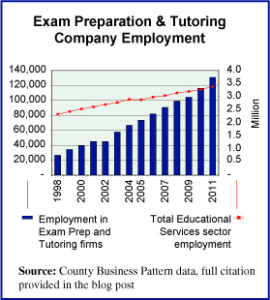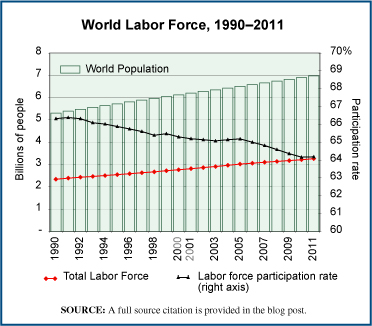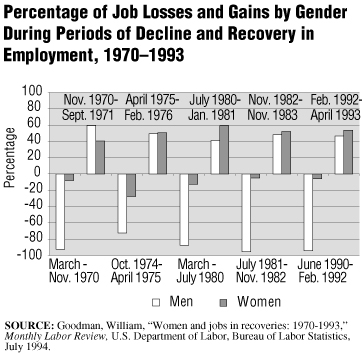
The Beijing Declaration states: “We are determined to … promote women’s economic independence, including employment, and eradicate the increasing burden of poverty on women…” Two ways to do this are to encourage entrepreneurship and support women-owned businesses.1 Globally in 2018, 252 million women were entrepreneurs, with another 153 million women operating established businesses.
Worldwide for every 10 male entrepreneurs, there are 7 female entrepreneurs. Only 6 countries in the world have equal rates of entrepreneurship among men and women: Indonesia, Thailand, Panama, Qatar, Madagascar, and Angola. The countries with the highest percentage of female entrepreneurs include Angola (40.7% of the adult female population are entrepreneurs), Guatemala (24.5%), Chile (21.2%), Madagascar (21.1%), Peru (20.9%), Thailand (19.3%), Colombia (17.8%), Lebanon (17.4%), Brazil (17.3%), and Sudan (17.1%). Where does the United States rank? 14th, with 13.6% of the adult female population being entrepreneurs.
Why did women establish their businesses? Did they seize opportunities given to them or did they start their businesses out of necessity? In almost all of these countries, a majority of women saw an opportunity to start a business and took it. Only in Angola did more women start businesses out of necessity rather than after an opportunity presented itself, 49.5% versus 47.2%, respectively.
Today’s market size shows the number of women-owned businesses in the United States in 2007, 2012, 2017 and 2019. Data for 2017 and 2019 are projections based on the 2012 Survey of Business Owners from the U.S. Census Bureau and adjusted using the gross domestic product figures for January of that year. Over this time period, the number of women-owned businesses grew by 66.1%. In 2007, 28.8% of businesses in the United States were owned by women; in 2019, 42% were. Revenues increased 54.6%, from $1.2 trillion to $1.85 trillion. While most women-owned businesses have no employees—in 2012, this amounted to about 90%—the number of people employed by those that do increased 24% from 7.5 million in 2007 to 9.4 million in 2019.
Half of all women-owned businesses fall into three industries: other services; healthcare and social assistance; and professional, scientific, and technical services. “Other services” includes hair and nail salons and petcare businesses. Women who start these types of businesses tend to do so out of necessity or a need for a job with flexible hours. “Healthcare and social assistance” includes child daycare and home healthcare. “Professional, scientific, and technical services” includes lawyers, bookkeepers, architects, public relations firms and consultants.
The top 10 fastest-growing women-owned companies in the United States are Not Ordinary Media (revenue of $21.4 million in 2018), nutpods ($19.1 million), Kindred Bravely ($9.6 million), SD3IT ($11.9 million), Skinny Dipped ($10.2 million), TalEx ($48.5 million), TrueChoicePack ($7.8 million), 4th & Heart ($14.3 million), Core Software Technologies ($4.6 million) and WT Stevens Construction ($7.2 million). Not Ordinary Media ranked number 10 on the 2019 Inc. 5000 list with a growth rate of 11,996% from 2015 to 2018. The Inc. 5000 is a list of the fastest-growing privately held companies in the United States.
1 Women-owned businesses are businesses that are at least 51% owned, operated and controlled by one or more women.
Geographic reference: United States
Year: 2007, 2012, 2017 and 2019
Market size: 7.8 million, 9.9 million, 11.6 million and 12.9 million respectively.
Sources: “Statistics for All U.S. Firms by Number of Owners by Industry, Gender, Ethnicity, Race, and Veteran Status for the U.S.: 2007,” 2007 Survey of Business Owners, U.S. Census Bureau, December 15, 2015 available online here; “Statistics for All U.S. Firms by Number of Owners by Industry, Gender, Ethnicity, Race, and Veteran Status for the U.S.: 2012,” 2012 Survey of Business Owners, U.S. Census Bureau, February 23, 2016 available online here; Beijing Declaration and Platform for Action, United Nations, 1995, reprinted by UN Women in 2014 available online here; Global Entrepreneurship Monitor 2018/2019 Global Report, Global Entrepreneurship Research Association, January 21, 2019 available online here; “More Than 250M Women Worldwide Are Entrepreneurs, According to the Global Entrepreneurship Monitor Women’s Report from Babson College and Smith College,” CISION PR Newswire, November 18, 2019 available online here; Brit Morse, “These Are the 20 Fastest-Growing Female-Founded Companies in 2019,” Inc., September 19, 2019 available online here; The 2017 State of Women-Owned Business Report, American Express, 2017 available online here; The 2019 State of Women-Owned Business Report, American Express, 2019 available online here; “Women-Owned Businesses,” U.S. Census Bureau available online here.
Image source: Christin Hume, “Workspace Wonder Woman,” Unsplash, July 12, 2017 available online here


 Collaborative robots, or co-bots, are robots that work alongside human workers. Many workers are wary of the increased use of robots in general, fearing the loss of their jobs. M.I.T. and Boston University estimated that up to six people lose their jobs for each robot per 1,000 workers a company adds. Employers, however, cite increased productivity, cost savings, and healthier work environments when robots are used in the workplace. Robots can work in hazardous jobs or do repetitive tasks thereby reducing worker injuries.
Collaborative robots, or co-bots, are robots that work alongside human workers. Many workers are wary of the increased use of robots in general, fearing the loss of their jobs. M.I.T. and Boston University estimated that up to six people lose their jobs for each robot per 1,000 workers a company adds. Employers, however, cite increased productivity, cost savings, and healthier work environments when robots are used in the workplace. Robots can work in hazardous jobs or do repetitive tasks thereby reducing worker injuries. According to the survey, Freelancing in America: 2016, commissioned by UpWork in partnership with Freelancers Union, 35% of the workforce—55 million people—in the United States were freelancers in 2016. As of June 2017, there were at least 79 active employment websites for freelancers. Employers post jobs they would like to outsource and freelancers apply for or bid on the work. Many of these jobs are temporary, an employer wanting to outsource a particular project for example. Most of the jobs listed on these sites allow the worker to work remotely.
According to the survey, Freelancing in America: 2016, commissioned by UpWork in partnership with Freelancers Union, 35% of the workforce—55 million people—in the United States were freelancers in 2016. As of June 2017, there were at least 79 active employment websites for freelancers. Employers post jobs they would like to outsource and freelancers apply for or bid on the work. Many of these jobs are temporary, an employer wanting to outsource a particular project for example. Most of the jobs listed on these sites allow the worker to work remotely. 



